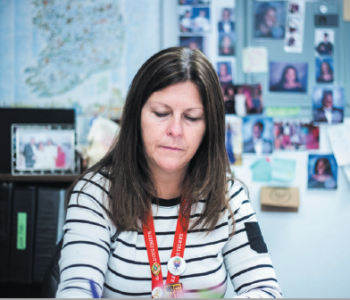 Uncategorized
Uncategorized
Kind Doesnt Mean ‘Push Over’
In today’s world, it’s easy to get caught up in the hustle and bustle of our daily lives. With so much going on, it’s important to remember to be kind to one another. That’s why the National Education Association (NEA) has launched a campaign to promote kindness in schools across America.
According to the NEA, “kindness is the foundation of a positive school culture.” When students feel valued and respected, they are more likely to succeed academically and socially. The campaign emphasizes the importance of creating a safe and inclusive environment where students feel comfortable expressing themselves and engaging with others.
One way to promote kindness in schools is through service learning projects. These projects give students the opportunity to work together to make a positive impact in their community. By working together to help others, students learn the value of empathy, compassion, and teamwork.
Another way to promote kindness is through the use of positive reinforcement. Teachers and administrators can acknowledge and celebrate acts of kindness by students, whether it’s through a simple thank you or a public recognition ceremony. This helps to reinforce positive behaviors and encourages students to continue to be kind to one another.
Overall, promoting kindness in schools is about creating a culture of respect and empathy. By teaching young people the value of kindness, we can help to create a brighter future for all.
Being kind is one of the most important virtues that we can possess as human beings. It is an attribute that can be expressed in a multitude of ways, from simple acts of courtesy and consideration to more profound displays of empathy and compassion. Being kind not only benefits those around us, but it can also be beneficial for our own mental and physical health. Studies have shown that kind acts can lower stress levels, decrease symptoms of depression and anxiety, and even improve our immune system. In a world where negativity and cruelty often dominate the headlines, choosing to be kind can be a powerful way to make a difference and create a better world for ourselves and others.
In the article “Learning to Be Kind,” published by the National Education Association (NEA), the importance of teaching kindness in the classroom is discussed. The article highlights the fact that kindness is not only important for creating a positive classroom environment, but it is also essential for the social and emotional development of students.
The article cites research studies that have shown that students who are taught to be kind exhibit more positive behaviors, including increased empathy, improved relationships, and better academic performance. The NEA also emphasizes the importance of modeling kindness for students by demonstrating empathy, forgiveness, and gratitude.
The article provides several practical tips for teachers to incorporate kindness into their everyday classroom routines. These include creating a kindness calendar, where students are encouraged to perform acts of kindness every day, and using literature to teach kindness and empathy.
Overall, the NEA’s article “Learning to Be Kind” emphasizes the importance of teaching kindness in the classroom and provides practical tips for teachers to incorporate kindness into their everyday routines. By teaching kindness, educators can help create a positive classroom environment and promote the social and emotional development of their students.
Flannery, M. E. (2020, April 13). Learning to be kind. NEA. https://www.nea.org/advocating-for-change/new-from-nea/learning-be-kind